
Get ready for real time adventure!
Sri Lanka is truly a paradise unlike any other on planet Earth. there’s nothing that Sri Lanka doesn’t offer.
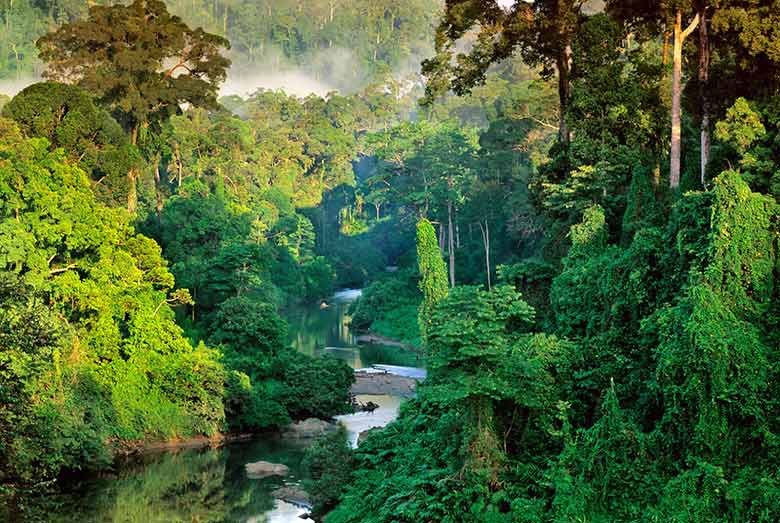
SINHARAJA RAIN FOREST
Sinharaja Forest Reserve is a forest reserve and a biodiversity hotspot in Sri Lanka. It is of international significance and has been designated a Biosphere Reserve and World Heritage Site by UNESCO. According to International Union for Conservation of Nature (IUCN), Sinharaja is the country's last viable area of primary tropical rainforest. More than 60% of the trees are endemic and many of them are considered rare. 50% of Sri Lankan's endemics species of animals (especially butterfly, amphibians, birds, snakes and fish species). It is home to 95% endemic birds. The hilly virgin rainforest, part of the Sri Lanka lowland rain forests ecoregion, was saved from the worst of commercial logging by its inaccessibility, and was designated a World Biosphere Reserve in 1978 and a World Heritage Site in 1988.
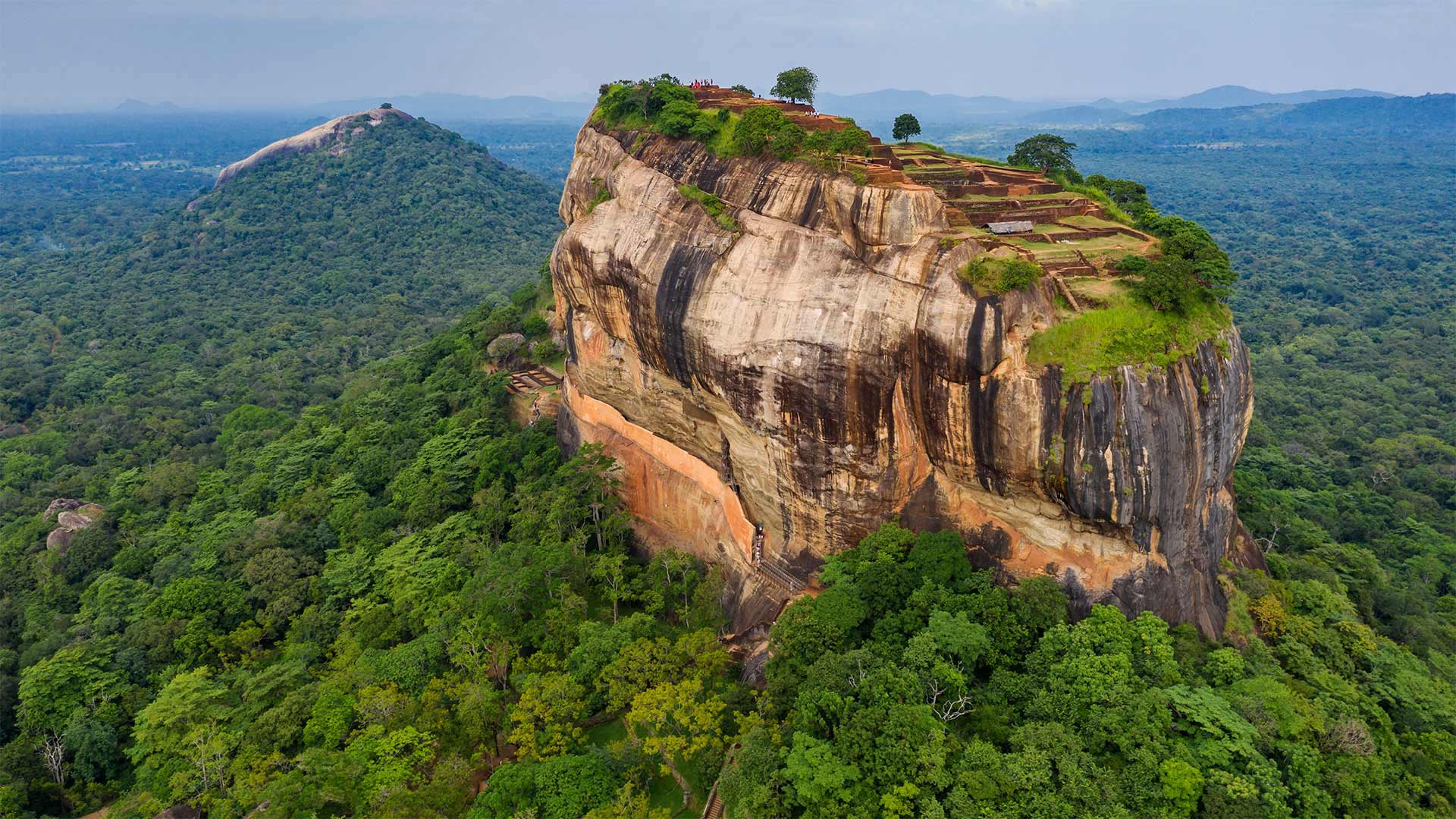
SIGIRIYA
Sigiriya or Lion Rock (Sinhala: සීගිරිය) is an ancient rock fortress located in the northern Matale District near the town of Dambulla in the Central Province, Sri Lanka. The name refers to a site of historical and archaeological significance that is dominated by a massive dst-column of rock around 180 meters (590 ft) high. According to the ancient Sri Lankan chronicle the Culavamsa, this site was selected by King Kashyapa (477 – 495 AD) for his new capital. On a small plateau about halfway up the side of this rock he built a gateway in the form of an enormous lion. Sigiriya today is a UNESCO listed World Heritage Site. It is one of the best preserved examples of ancient urban planning.
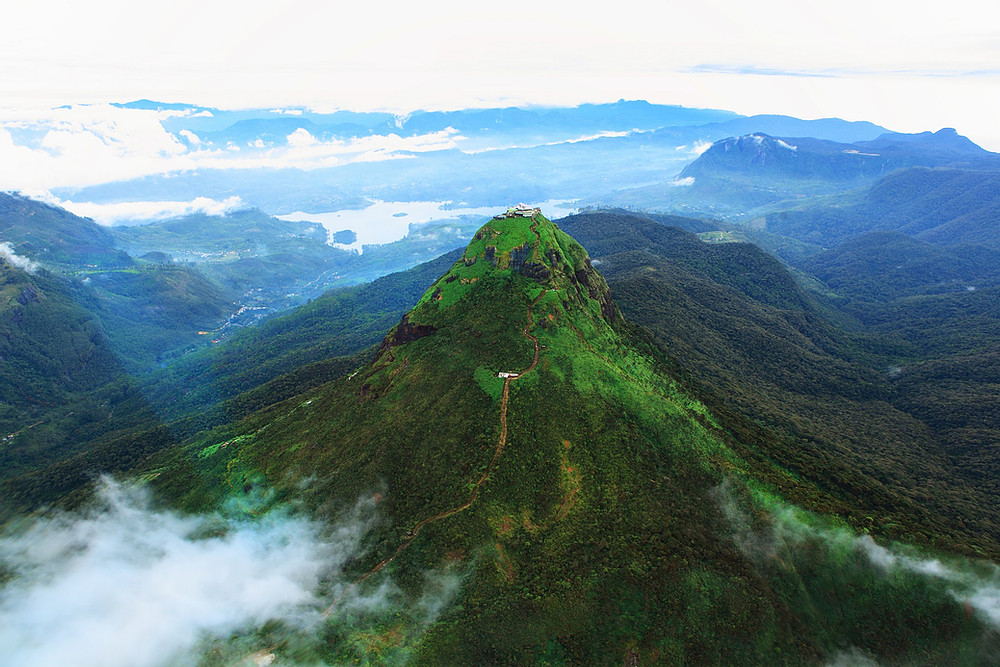
ADAM'S PEAK
Adam's Peak is a 2,243 m (7,359 ft) tall conical mountain located in central Sri Lanka. It is well known for the Sri Pada (Sinhala: ශ්රී පාද). The mountain is located in the southern reaches of the Central Highlands in the Ratnapura District and Nuwara Eliya district of the Sabaragamuwa Province and Central Province. The surrounding region is largely forested hills, with no mountain of comparable size nearby. The region along the mountain is a wildlife reserve, housing many species varying from elephants to leopards, and including many endemic species. Adam's Peak is important as a watershed.
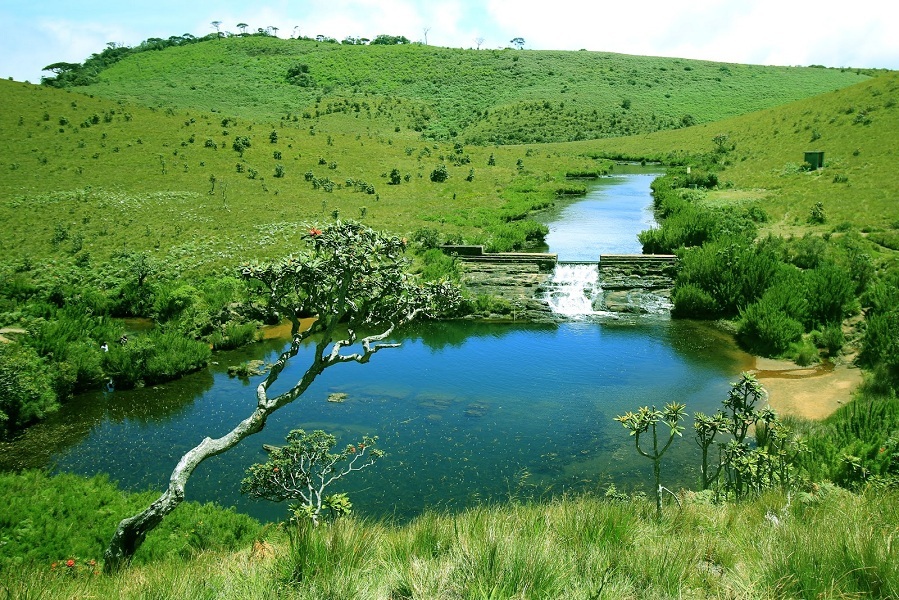
HORTON PLAINS
Horton Plains (Sinhala: හෝර්ටන් තැන්න ජාතික උද්යානය) is a national park in the central highlands of Sri Lanka that was designated in 1988. It is located at an elevation of 2,100–2,300 m (6,900–7,500 ft) and encompasses montane grassland and cloud forest. The Horton Plains are the headwaters of three major Sri Lankan rivers, the Mahaweli, Kelani, and Walawe. In Sinhala the plains are known as Maha Eliya Plains (මහ එළිය තැන්න). Stone tools dating back to Balangoda culture have been found here. The plains' vegetation is grasslands interspersed with montane forest and includes many endemic woody plants. Large herds of Sri Lankan sambar deer feature as typical mammals and an Important Bird Area.
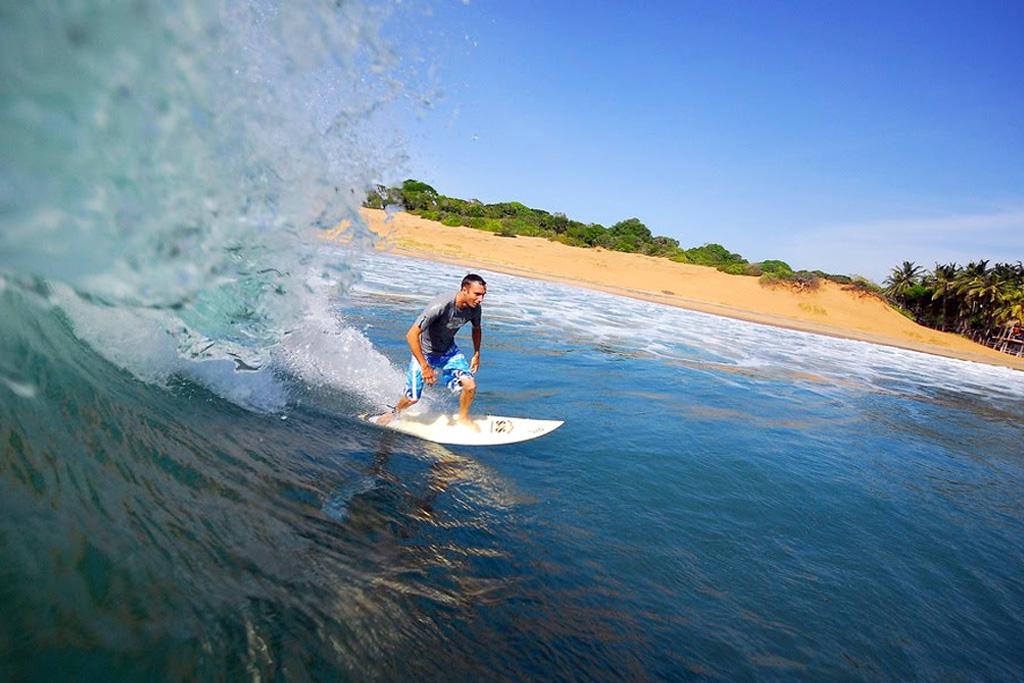
ARUGAM BAY
Arugam Bay is situated on the Indian Ocean in the dry zone of Sri Lanka's southeast coast, and a historic settlement of the ancient Batticaloa Territory (Mattakallappu Desam). The bay is located 117 kilometres (73 mi) south of Batticaloa, 320 kilometres (200 mi) due east of Colombo, and approximately 4 kilometres (2.5 mi) south of the market town of Pottuvil. While traditionally fishing has dominated the local economy, tourism has grown rapidly in the area in recent years. Tourism in Arugam Bay is dominated by surf tourism, thanks to several quality breaks in the area, however tourists are also attracted by the local beaches, lagoons, historic temples and the nearby Kumana National Park.
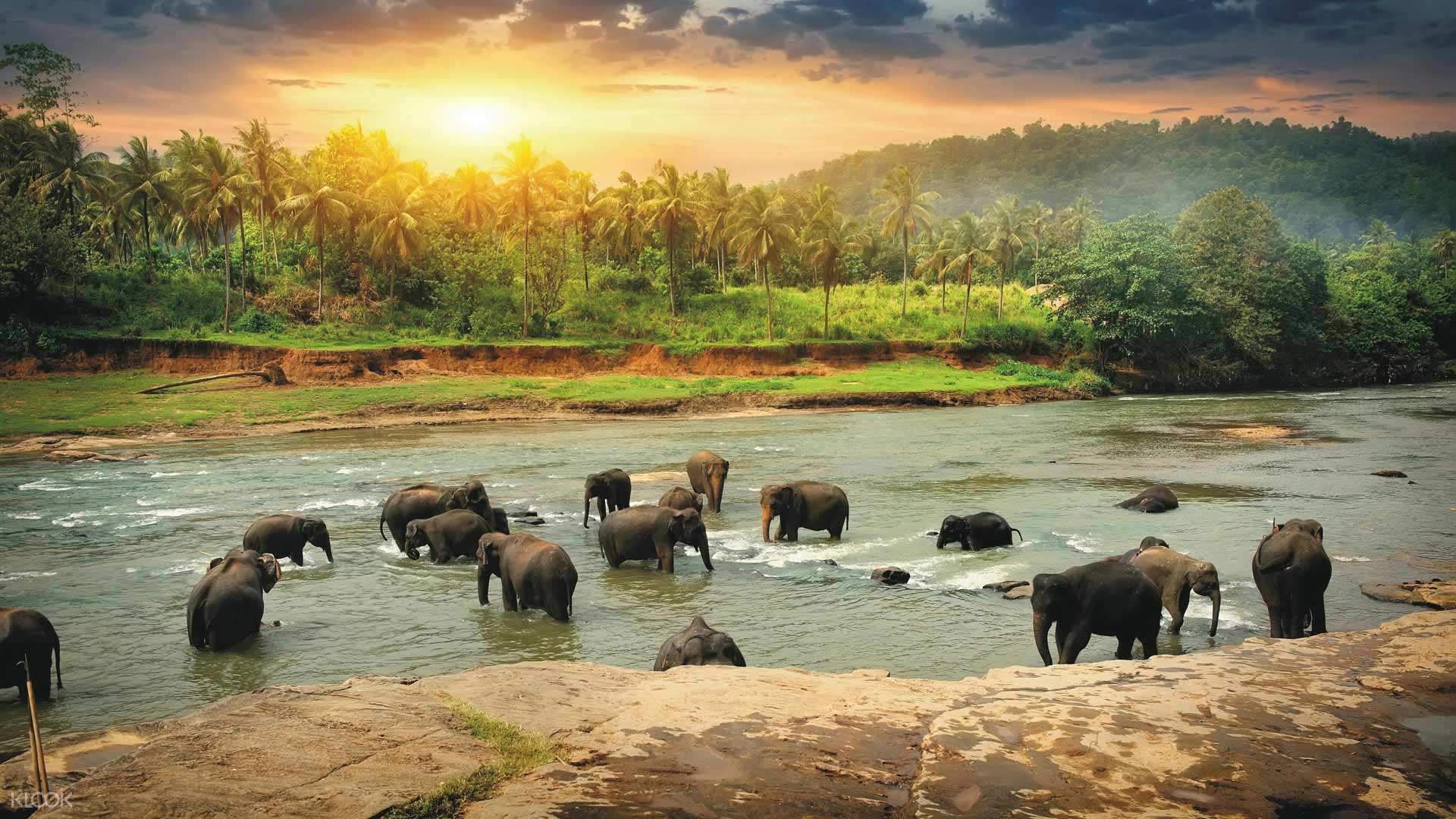
PINNAWALA ELEPHANT ORPHANAGE
Pinnawala Elephant Orphanage (Sinhala: පින්නවල අලි අනාථාගාරය), is an orphanage, nursery and captive breeding ground for wild Asian elephants located at Pinnawala village, 13 km (8.1 mi) northeast of Kegalle town in Sabaragamuwa Province of Sri Lanka. Pinnawala has the largest herd of captive elephants in the world. In 2011, there were 96 elephants, including 43 males and 68 females from 3 generations, living in Pinnawala. The orphanage was founded to care and protect the many orphaned unweaned wild elephants found wandering in and near the forests of Sri Lanka. It was established in 1975 by the Sri Lanka Department of Wildlife Conservation (DWC).

NILAVELI BEACH
The Nilaveli Beach is situated in the coastal town of Nilaveli, which is about 16 km North of Trincomalee. It is a beautiful white sandy beach with waves ideal for surfing, diving and snorkeling. About 2 km into the sea is the famous Piegon Island and further up North is a cluster of reddish rocks known as the Red Rock Beach. Nilaveli is one of the finest and most beautiful beaches of Sri Lanka. Nilaveli is rich in biodiversity with its many species of vegetation, reef fish and corals. The area consists of lush coconut palm groves and cattle. The people in Trincomalee are mostly Hindus who consider cows as sacred. The golden sand and azure waters of Nilaveli Beach attracts a large number of tourists and locals throughout the year.
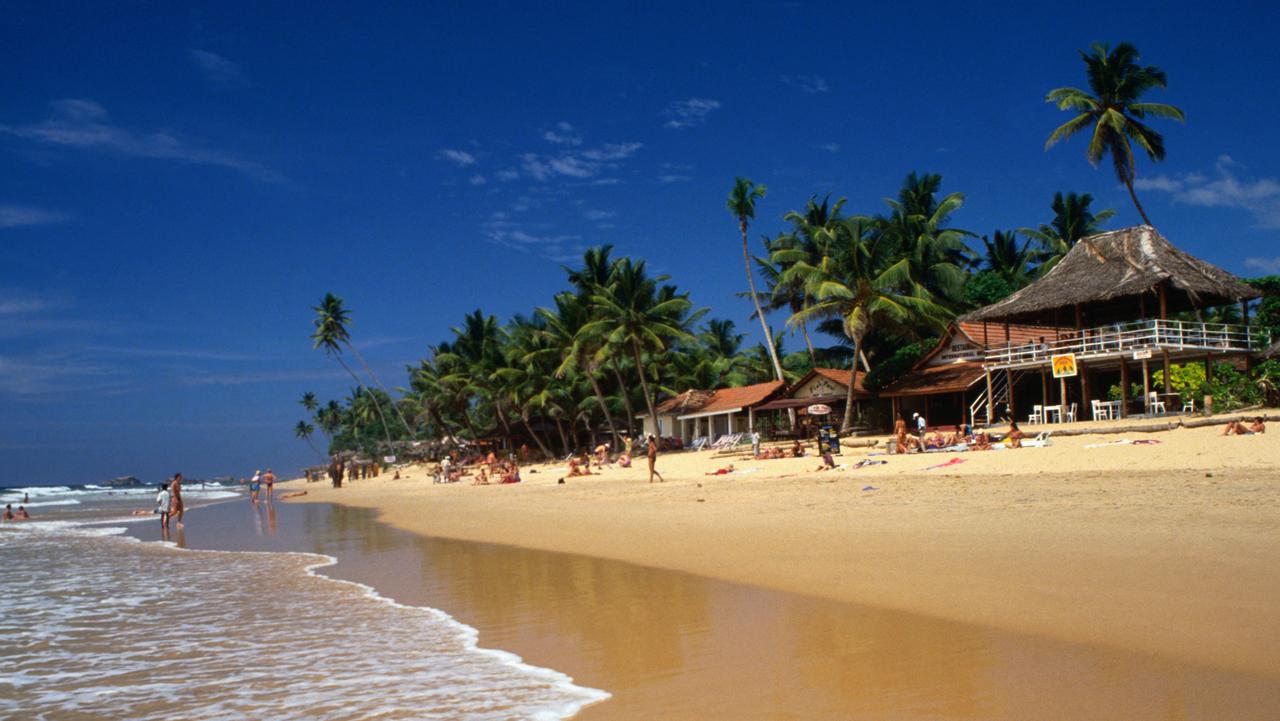
HIKKADUWA BEACH
The beaches in Hikkaduwa have been attracting tourists since the 1960s when it was first discovered. The beach stretches on spanning over kilometers and hosts many fun activities to keep the tourists engaged. These water sports include snorkeling and scuba diving for the adventure seekers. The clear waters beckon the nature lovers who wish to take a dip inside the waters to witness the vibrant, colorful aquatic life. The coral sanctuary hosts gorgeous coral formations, which house a variety of fishes and large turtles. The islets along the beach breed pockets of wildlife and are a wonderful way to interact with it.
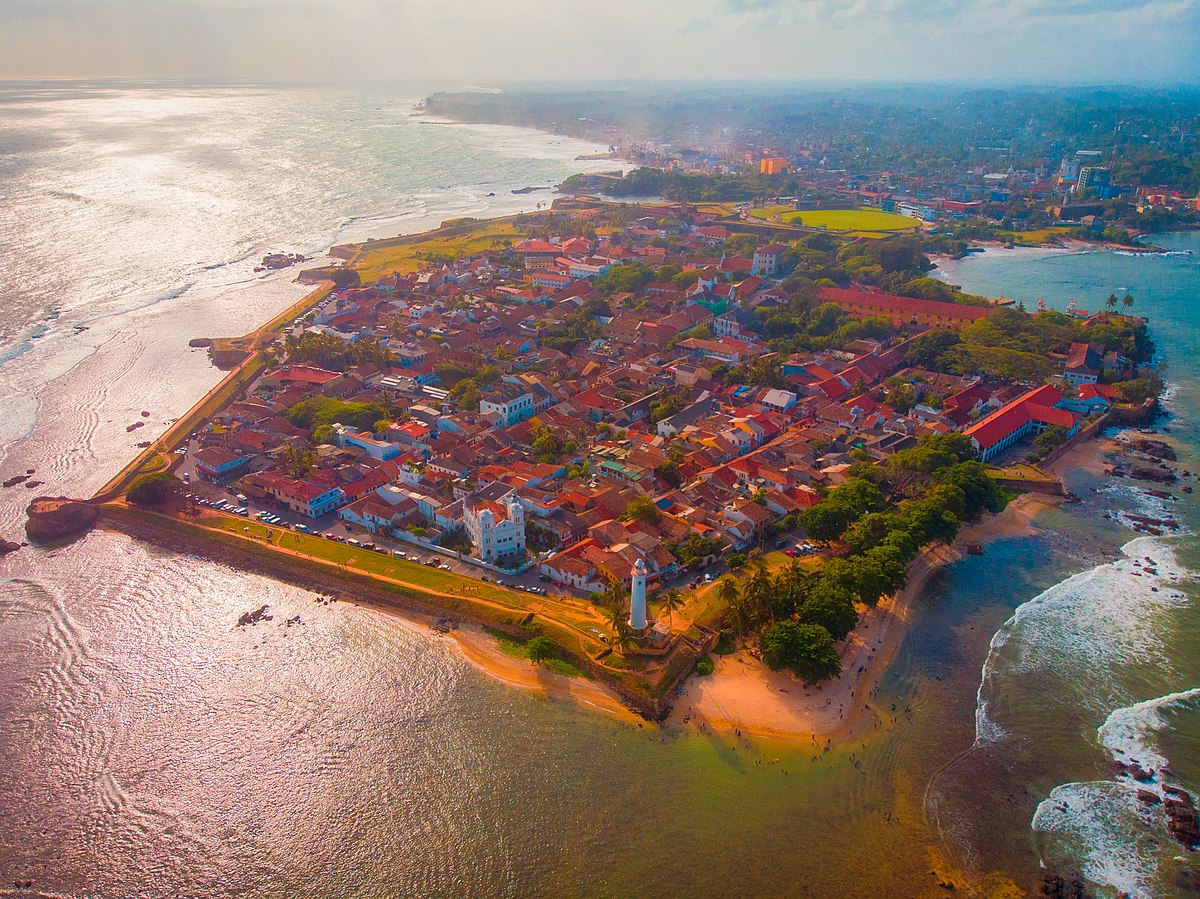
GALLE DUTCH FORT
Galle Fort (Sinhala: ගාලු කොටුව), in the Bay of Galle on the southwest coast of Sri Lanka, was built first in 1588 by the Portuguese, then extensively fortified by the Dutch during the 17th century from 1649 onwards. It is a historical, archaeological and architectural heritage monument, which even after more than 432 years maintains a polished appearance, due to extensive reconstruction work done by Archaeological Department of Sri Lanka. The fort has a colorful history, and today has a multi-ethnic and multi-religious population. The heritage value of the fort has been recognized by the UNESCO and the site has been inscribed as a cultural heritage UNESCO World Heritage Site under criteria iv, for its unique exposition of "an urban ensemble which illustrates the interaction of European architecture and South Asian traditions from the 16th to the 19th centuries."
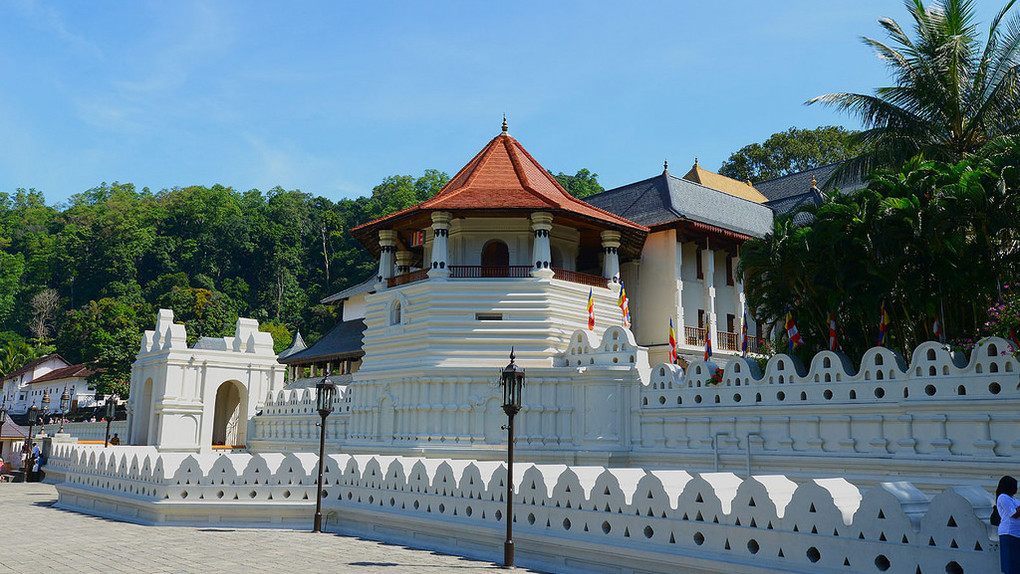
TEMPLE OF THE TOOTH
Temple of the Sacred Tooth Relic; commonly known as the ශ්රී දළදා මාළිගාව (Glorious Tooth Temple), is a Buddhist temple in Kandy, Sri Lanka. It is located in the royal palace complex of the former Kingdom of Kandy, which houses the relic of the tooth of the Buddha. Since ancient times, the relic has played an important role in local politics because it is believed that whoever holds the relic holds the governance of the country. The relic was historically held by Sinhalese kings. The temple of the tooth is a World Heritage Site mainly due to the temple and the relic. Rituals are performed three times daily: at dawn, at noon, and in the evenings. On Wednesdays, there is a symbolic bathing of the relic with a herbal preparation made from scented water and fragrant flowers called Nanumura Mangallaya; this holy water is believed to contain healing powers and is distributed to those present.
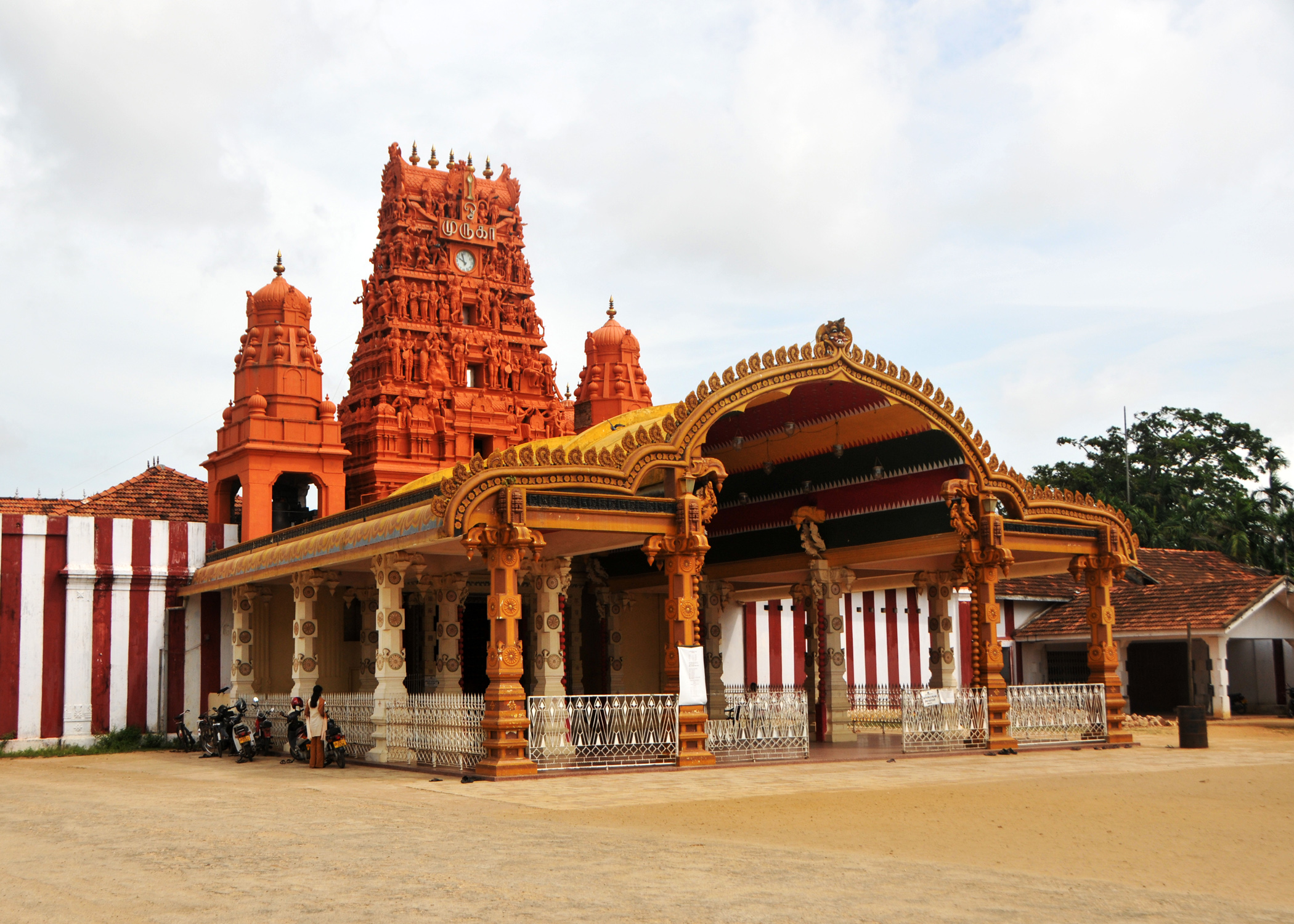
NALLUR KOVIL
Nallur Kandaswamy Kovil (Sinhala: නල්ලුරුව ස්කන්ධ කුමාර කෝවිල) is a significant Hindu temple, located in Nallur, Northern Province, Sri Lanka. The presiding deity is Lord Murugan in the form of the holy 'Vel' in the Sanctum, the primary shrine, and in other forms, namely, Shanmugar, Muthukumaraswami, Valli Kaanthar with consorts Valli and Deivayanai, and Thandayuthapani, sans consorts in secondary shrines in the temple. The temple holds both religious and social significance for its Tamil-majority Hindu devotees, to the extent that kovils have been built across the world and carry the same name as the Nallur Kandaswamy Kovil in honour of it.
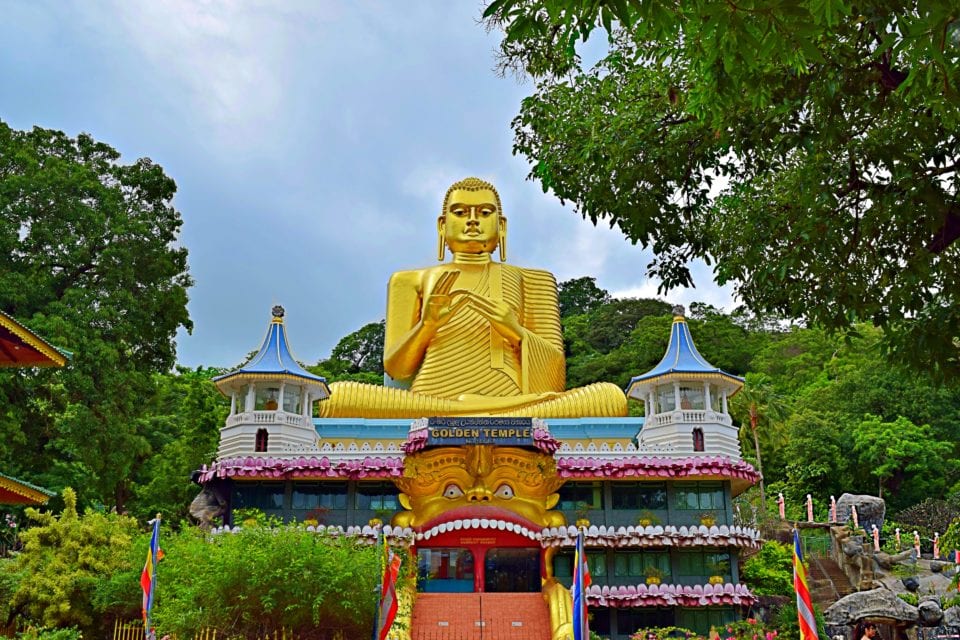
DAMBULLA GOLDEN TEMPLE
Dambulla cave temple (Sinhala: දඹුල්ල රජමහා විහාරය) also known as the Golden Temple of Dambulla is a World Heritage Site (1991) in Sri Lanka, situated in the central part of the country. Dambulla is the largest and best-preserved cave temple complex in Sri Lanka. The rock towers 160 m over the surrounding plains. There are more than 80 documented caves in the surrounding area. Major attractions are spread over five caves, which contain statues and paintings. These paintings and statues are related to Gautama Buddha and his life. There are a total of 153 Buddha statues, three statues of Sri Lankan kings and four statues of gods and goddesses. Prehistoric Sri Lankans would have lived in these cave complexes before the arrival of Buddhism in Sri Lanka as there are burial sites with human skeletons about 2700 years old in this area, at Ibbankatuwa near the Dambulla cave complexes.

LOTUS TOWER
Lotus Tower (Sinhala: නෙලුම් කුලුන), also referred to as Colombo Lotus Tower, is a tower of 350 m (1,150 ft), located in Colombo, Sri Lanka It also reflects the symbolic landmark of Sri Lanka. As of 16 September 2019, the tower is currently the tallest self-supported structure in South Asia. It is also the second tallest structure in South Asia after the guy-wire-supported INS Kattabomman in India. The tower is also the 11th tallest completed tower in Asia and it is also the 19th tallest tower in the world. The lotus-shaped tower will be used for communication, observation and other leisure facilities. It is visible throughout Colombo, its suburbs and most major highways radiating from and around the city.
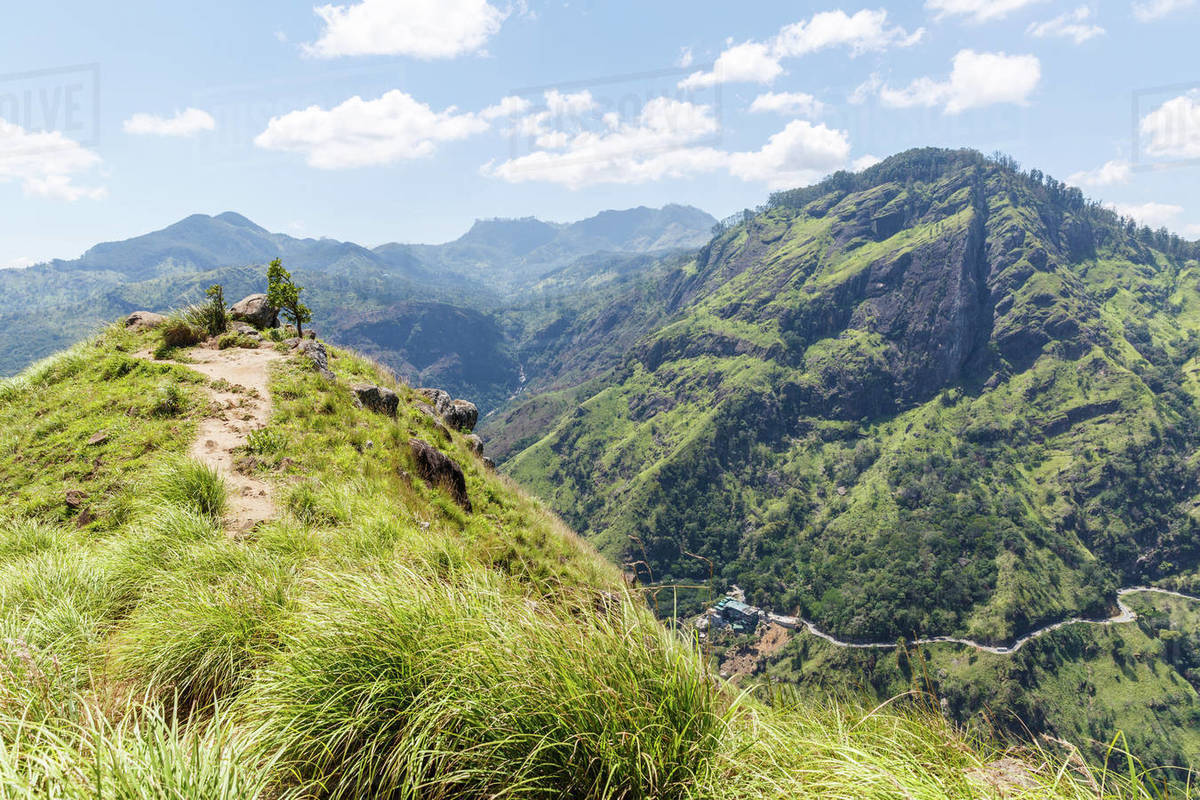
ELLA
Ella (Sinhala: ඇල්ල) is a small town in the Badulla District of Uva Province, Sri Lanka governed by an Urban Council. Located on the Colombo-Badulla railway line, and the A16 highway (Beragala-Hali Ela) a part of the Colombo-Badulla road. It is approximately 200 kilometres (120 mi) east of Colombo and is situated at an elevation of 1,041 metres (3,415 ft) above sea level. The area has a rich bio-diversity, dense with numerous varieties of flora and fauna. Ella is surrounded by hills covered with cloud forests and tea plantations. The town has a cooler climate than surrounding lowlands, due to its elevation. The Ella Gap allows views across the southern plains of Sri Lanka.
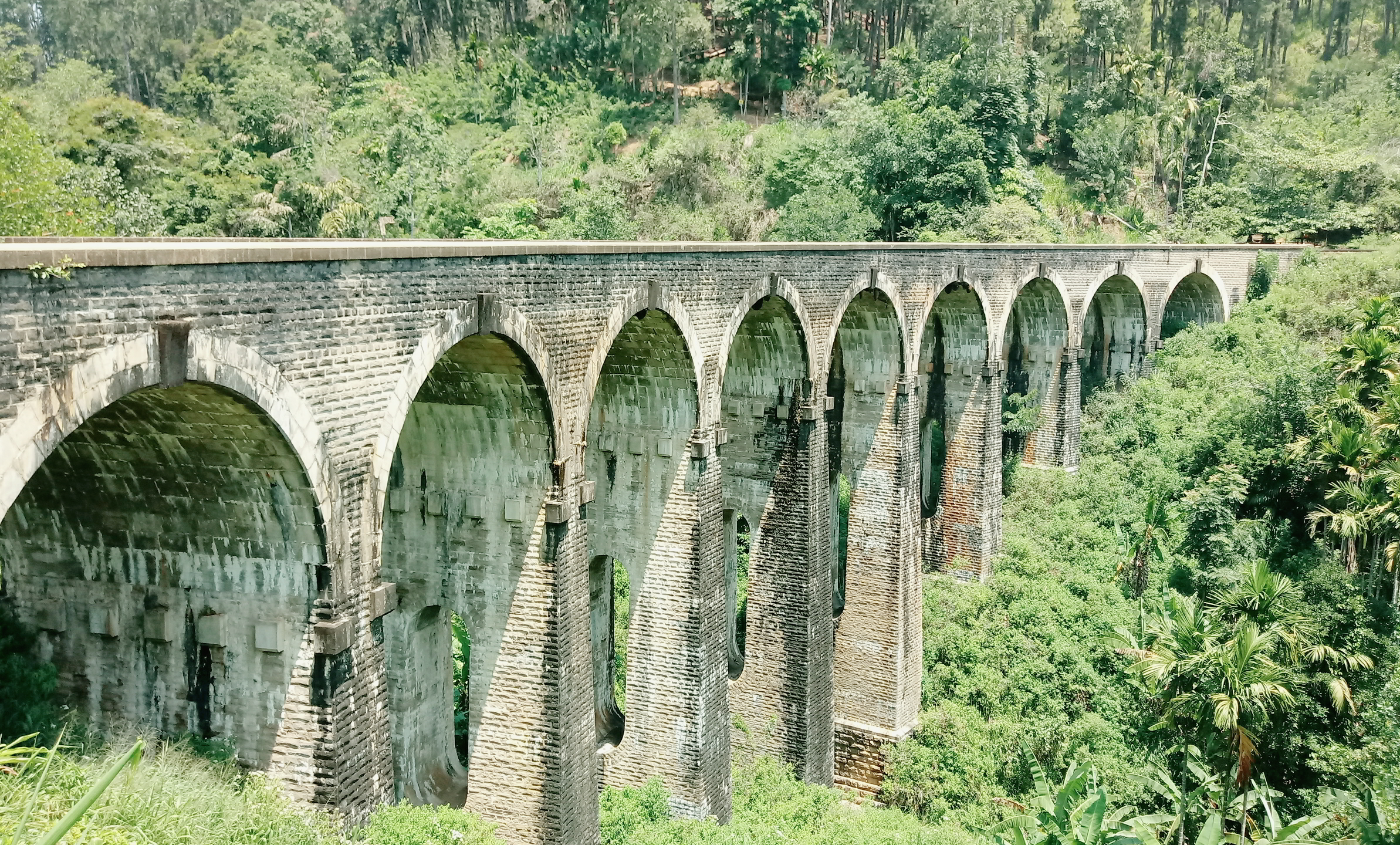
NINE ARCH BRIDGE
The Nine Arch Bridge (Sinhala: ආරුක්කු නමයේ පාලම,) is a viaduct bridge in Sri Lanka. It is one of the best examples of colonial-era railway construction in the country. The construction of the bridge is generally attributed to a local Ceylonese builder, P. K. Appuhami, in consultation with British engineers. It is located in Demodara, between Ella and Demodara railway stations. The surrounding area has seen a steady increase of tourism due to the bridge's architectural ingenuity and the profuse greenery in the nearby hillsides. The work came to a standstill, leading the locals to build the bridge with stone bricks and cement, but without steel.

THE NATIONAL MUSEUM
The National Museum of Natural History is a museum that covers the natural heritage of Sri Lanka. The museum is located closer to the National Museum of Colombo. It was established on September 23, 1986 and became only one museum in Sri Lanka that represents natural history and natural heritage. The National Museum of Natural History exhibits rare and threatened with extinction such as natural heritage of plant and animal species endemic to Sri Lanka, over 5,000 specimens of mammals, Jurassic period indigenous fossils and various kinds of geological rocks.
